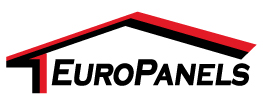What does fire reaction mean?
There are 2 factors that should be considered in the field of fire: reaction to fire and resistance to fire.
Reaction to Fire tests are used to evaluate the contribution of a material to fire growth. Reaction to Fire means how the material itself reacts in the case of fire. An important part of this standard is the CE labelling system accompanied with the information about the European classification. Additional national requirements from different European countries are given in national standards.
New European Classification system in case of Reaction to Fire are Reaction to Fire Classes (Euroclasses):
A1 – no contribution to fire
A2 – no contribution to fire
B – very limited contribution to fire
C – limited contribution to fire
D – acceptable contribution to fire
E – acceptable contribution to fire
F – no performance requirements
Sample of the Euroclass for PUR panels by EuroPanels: B – s2, d0
The additional reference numbers:
s1, s2, s3 [m2/sec2] describes smoke intensity
s1 = non or low smoke
s3 = heavy smoke
d0, d1, d2 = description of burning droplets
d0 = no burning, no droplets within 600 seconds
Resistance to Fire means that a whole building system protects a loadbearing structure like a roof or wall construction etc. The European rating could, for example, be REI 30 which means that the whole system will not collapse within 30 minutes.
PUR Roof panels by EuroPanels have R E I 15 result and a wall panels have E I 15 value:
R – Load bearing capacity
To maintain loadbearing without the loss of structural capability
E – Integrity
To withstand fire exposure, in general from below to above, without fire passage through to the other side in the form of flames
I – Insulation
To withstand fire exposure, on one side only, without the transmission of fire in the form of significant heat transfer.

 English
English








